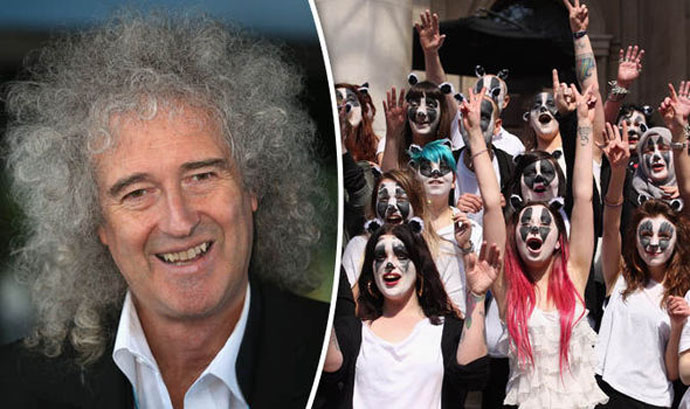BRIAN MAY has described the culling of up to 33,000 badgers a national tragedy as the killing began today.
DAILY EXPRESS
15 Sep 2017 by Stuart Winter

Brian May described the culling of badgers a national tragedy
Marksmen have started shooting the legally protected animals in 21 areas across England after being granted official licences earlier this week.
The parameters of the latest cull are far greater than previous years with shooting taking place in Cheshire, Cornwall, Devon, Dorset, Gloucestershire, Herefordshire, Somerset and Wiltshire in the Government’s war on bovine tuberculosis.
It is expected to kill twice as many badgers than over the previous five years.
Animal welfare groups have criticised the cull and the Queen rock star and his Save Me Trust have added their voices to the condemnation.
Brian May says: “For the badgers – and actually for us as a nation – this cull is a tragedy and a disaster.
“What’s less understood is that it’s a tragedy for the farmers and the cattle, too.
“The drive behind continuing with a policy which is failing seems to be that ‘we have to be seem to do something, rather than nothing’ — but sadly this ‘something’ doesn’t work.
“The interests of the farmers would be much better served by a fresh look at this problem by the Government.
Interesting facts about Badgers
Tue, October 6, 2015
Badgers can run or gallop at 16-19 mph for short periods of time
Unlike dogs and foxes, badgers have five toes and very powerful, long claws, particularly on the front feet
Badgers have been known to become intoxicated with alcohol after eating rotting fruit
Badgers are protected in the UK by the Protection of badgers Act 1992 and schedule 6 of the wildlife and Countryside Act 1981. It is classified as a species of conservation concern by the UK Biodiversity Action Plan Badgers will eat several hundred earthworms every night
Badgers live in underground burrows called setts
There are eight spiciest of Badger which are, the Eurasian badger, American badger, the honey badger, the hog badger and also three species of ferret badger, the Indonesian stink badger and the Palawan or Calamian stink badger
“We believe the real solution is in sight, through enhanced TB testing.
“In years to come, I’m sure that badger culling will be seen as an enormous red herring, that squandered time, effort and money, gave farmers frustration and false hope, and diverted attention away from finding the real solution. “
A pause for re-evaluation is long overdue.”
Badger culls have been trialled since October 2013 with the Government’s aim to eradicate the disease over the next 20 years. ‘Shoot Selfies, Not Badgers’ – Brian May Stands Against UK Badger Cull
Ministers at the Department for Environment, Food and Rural Affairs say bovine TB is costing taxpayers £100 million annually and that 29,000 cattle had to be slaughtered last year, with England having the highest incidence of the disease in Europe.
Announcing the new measures earlier this week, including a plan to restart a badger vaccination programme, Farming Minister George Eustice declared: “Bovine TB not only has a devastating impact on our beef and dairy farms, but causes harm and distress to infected cattle.”
Since the culls began in 2013, 14,800 badgers in the West Country have been killed, but there have been criticisms over the way that large numbers have been shot without first being trapped.
Three leading animal welfare groups, the RSPCA, International Fund for Animal Welfare and Humane Society International UK, have all condemned plans to widen the cull.l
The RSPCA said: “We are now entering the fifth year for some culls, and after all that time, there is still no scientific evidence that culling is effective in reducing bovine TB in these areas.
“Indeed, culling could be spreading the disease to new areas.
“Nor do we believe that the methods used in the cull are humane or that there is any proof the badgers being culled are indeed infected with the disease.”